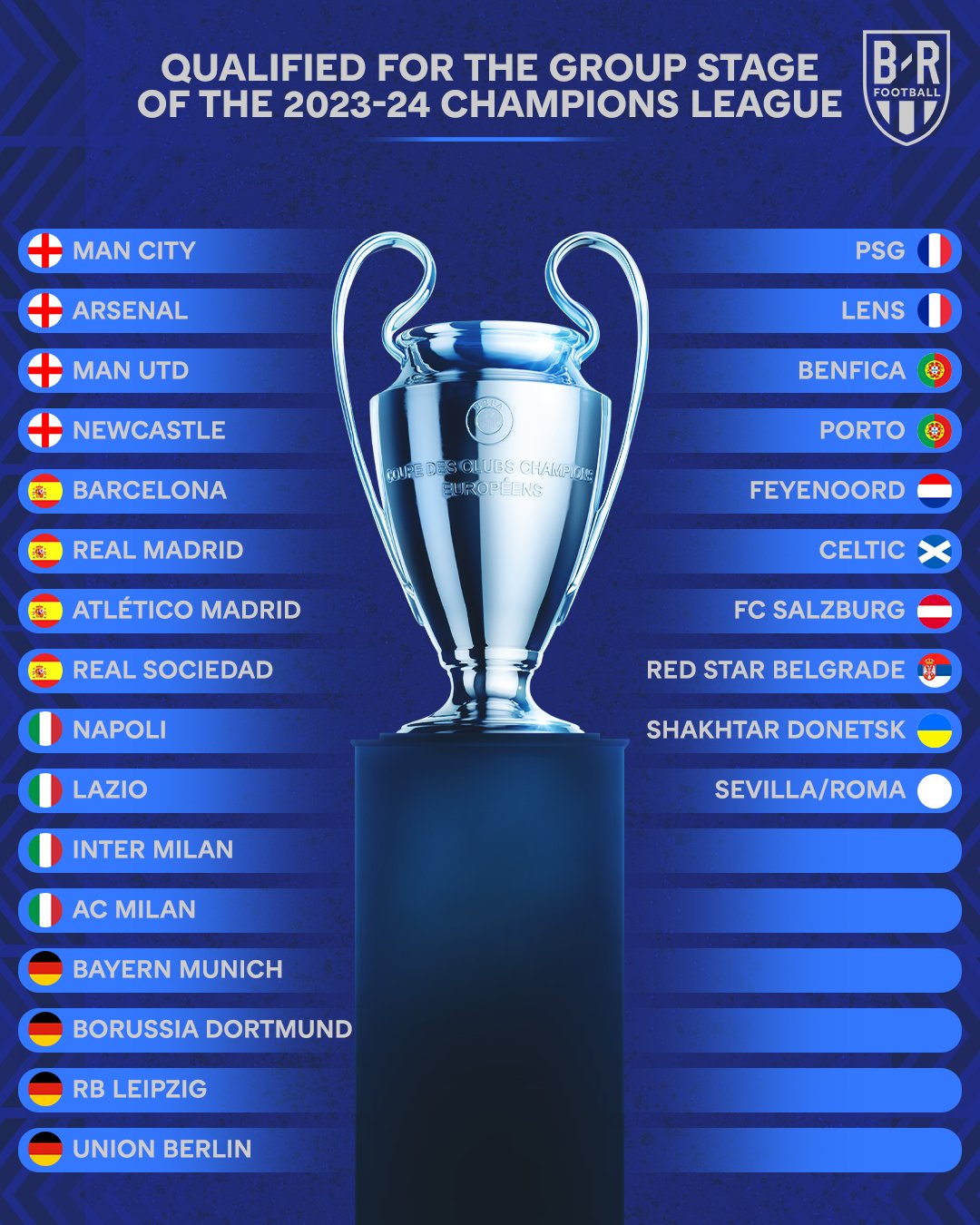
The Future of Football: Equipment Trends 2025 – A Revolution in Performance, Protection, and Sustainability
Football, the world’s most beloved sport, is in a perpetual state of evolution. While the core rules and the beautiful game itself remain timeless, the tools players wield on the pitch are undergoing a silent revolution. As we cast our gaze towards 2025, the landscape of football equipment is set to be transformed by an unprecedented convergence of cutting-edge material science, data-driven insights, advanced manufacturing techniques, and an unwavering commitment to sustainability. This isn’t just about incremental improvements; it’s about redefining the relationship between athlete and gear, pushing the boundaries of human performance, and ensuring the longevity of the planet.
The year 2025 will see equipment that is not merely an accessory but an extension of the athlete – smarter, lighter, more protective, and remarkably personalized. This article delves into the anticipated trends shaping football boots, goalkeeper gloves, shin guards, performance apparel, and even the ball itself, highlighting the key technological advancements and philosophical shifts driving this exciting future.
I. The Revolution on Your Feet: Football Boots 2025
Football boots have always been the most iconic and technologically scrutinized piece of a player’s arsenal. By 2025, the evolution of boots will be characterized by three pillars: hyper-personalization, integrated intelligence, and sustainable design.
A. Hyper-Personalization Through AI and 3D Printing:
Gone are the days of limited sizes and generic fits. In 2025, bespoke boot fitting will move from luxury to norm. Players will undergo comprehensive 3D foot scans, capturing intricate details of their foot shape, pressure points, and biomechanics. Artificial intelligence algorithms will then use this data to design a truly custom last. This personalized mold will be combined with advanced additive manufacturing (3D printing) to create boot uppers and soleplates that perfectly cradle the foot, minimizing dead space, enhancing lockdown, and maximizing power transfer. Expect materials like customizable lattice structures in the soleplate, offering variable stiffness and flexibility precisely where needed, or woven uppers that adapt to the foot’s dynamic movements during play. This level of customization will unlock unprecedented comfort, reduce the risk of blisters and injuries, and optimize responsiveness.
B. Integrated Intelligence and Haptic Feedback:
The "smart boot" concept, once a novelty, will mature significantly by 2025. Micro-sensors embedded within the boot’s soleplate and upper will discreetly collect a wealth of performance data in real-time. This includes metrics such as sprint speed, acceleration, deceleration, distance covered, shot power, ball contact points, and even pronation/supination during turns. This data, wirelessly transmitted to a player’s smart device or a coach’s tablet, will offer invaluable insights for training analysis, tactical adjustments, and injury prevention.
Beyond passive data collection, some high-end boots may incorporate subtle haptic feedback systems. Imagine a gentle vibration in the soleplate indicating optimal ball striking zones, or a subtle pulse in the upper guiding a player’s foot placement for specific dribbling techniques. While not a replacement for coaching, these sensory cues could accelerate skill development and refine in-game decision-making.
C. Sustainable Materials and Circular Design:
Sustainability will cease to be a niche marketing angle and become a fundamental design principle. Boots in 2025 will extensively feature recycled, bio-based, and biodegradable materials. This includes uppers made from recycled plastic yarns (e.g., ocean plastic), natural rubber for outsoles, and plant-based foams for cushioning. The focus will extend beyond just material sourcing to encompass the entire product lifecycle. Brands will prioritize modular designs that allow for easy repair or replacement of worn-out components (e.g., interchangeable stud configurations), extending the lifespan of the boots. Furthermore, take-back programs and advanced recycling technologies will ensure that, at the end of their life, boots can be efficiently broken down and repurposed into new products, closing the loop on material waste.
II. The Hand of Innovation: Goalkeeper Gloves 2025
Goalkeeper gloves are the last line of defense, and their evolution will focus on enhancing grip, protection, and tactile sensitivity.
A. Adaptive Grip Technologies:
The holy grail for goalkeepers is consistent grip in all conditions. By 2025, glove palms will feature advanced polymer compounds that dynamically react to environmental factors. Imagine latex formulations that become tackier in wet conditions or slightly firmer in dry, hot weather, optimizing ball control regardless of the elements. Micro-textured surfaces, potentially inspired by gecko feet or octopus suckers, will further enhance friction and ball retention. Some concepts might even involve electro-adhesive properties, activated on contact with the ball, providing momentary, superior grip.
B. Smart Protection and Ergonomic Design:
Traditional finger spines will evolve into more flexible, adaptive protective elements. These might involve auxetic materials – structures that thicken perpendicular to an applied force, offering enhanced impact absorption without hindering natural finger movement. Lightweight, multi-density foams will be strategically placed across the backhand, designed through computational fluid dynamics to dissipate impact energy across a wider area. The overall design will be more ergonomic, conforming precisely to the hand’s natural curvature, minimizing bulk, and maximizing comfort for extended wear.
C. Integrated Biometrics:
For elite goalkeepers, gloves could integrate biometric sensors tracking hand speed, reaction time, and even grip strength during saves. This data would provide valuable insights for training, helping coaches identify areas for improvement in a keeper’s technique and explosiveness.
III. Smarter Shields for Safer Play: Shin Guards 2025
Shin guards, often overlooked, are critical for player safety. Their future will involve material innovation, customizability, and intelligent protection.
A. Advanced Impact-Absorbing Materials:
The rigid plastic of today will give way to smart materials like D3O, Poron XRD, or even custom-engineered auxetic structures. These materials remain flexible and pliable during normal movement but instantly harden upon impact, absorbing and dispersing kinetic energy more effectively than traditional foams. This allows for thinner, lighter, and more comfortable shin guards that offer superior protection.
B. Personalized Fit and Integrated Sleeves:
Similar to boots, 3D scanning and printing will enable the creation of custom-molded shin guards that perfectly contour to a player’s lower leg, eliminating slippage and maximizing comfort. These guards will often be integrated seamlessly into compression sleeves made from breathable, moisture-wicking fabrics, further enhancing stability and reducing irritation. Some concepts might even see guards designed as a dynamic lattice structure that can be "printed" directly onto a base layer, providing targeted protection without any bulk.
C. Injury Prevention and Data Feedback:
For professional teams, shin guards could incorporate pressure sensors that detect and record the severity of impacts. This data could be used to monitor player exposure to collisions, inform recovery protocols, and potentially contribute to long-term injury prevention strategies by identifying players at higher risk.
IV. The Second Skin of the Future: Performance Apparel 2025
Football jerseys, shorts, and base layers will transcend mere fabric to become highly functional performance systems.
A. Smart Textiles and Biometric Monitoring:
Apparel in 2025 will incorporate conductive threads and integrated micro-sensors to monitor vital biometric data in real-time. This includes heart rate, respiration rate, core body temperature, sweat rate, and even muscle activity. This data will be crucial for optimizing training loads, preventing overexertion, and fine-tuning hydration and nutrition strategies. Imagine a jersey that alerts a player when they’re approaching dehydration, or base layers that provide targeted compression based on muscle fatigue.
B. Adaptive Thermoregulation and Moisture Management:
Fabrics will be engineered to actively regulate body temperature. Phase-change materials (PCMs) integrated into the fabric could absorb and release heat, keeping players cool in hot conditions and warm in cold. Advanced moisture-wicking and quick-drying technologies will be standard, ensuring players remain comfortable and light even during intense exertion. Some apparel might even feature micro-ventilation zones that automatically open or close based on body heat and sweat levels.
C. Sustainable and Circular Fashion:
The apparel industry is a major contributor to waste, and football apparel will lead the charge in sustainable practices. Jerseys and shorts will be predominantly made from 100% recycled polyester, bio-based polymers, or even innovative natural fibers with enhanced performance characteristics. Brands will adopt circular design principles, focusing on durable products, repairability, and end-of-life recycling programs where old jerseys are transformed into new ones, creating a closed-loop system. Natural dyes and water-saving manufacturing processes will also be prevalent.
V. More Than Just a Sphere: The Football 2025
Even the ball itself will see advancements, primarily focused on consistency, data collection, and environmental responsibility.
A. Enhanced Aerodynamics and Consistency:
While the basic spherical shape remains, the construction of the ball will continue to be refined for optimal flight stability and predictability. Panel designs, surface textures, and bladder technologies will be meticulously engineered to minimize drag and knuckle-ball effects, ensuring consistent trajectory and true bounce in all conditions.
B. Embedded Sensor Technology for Training and Refereeing:
High-end training balls will feature advanced internal sensors capable of precisely tracking speed, spin rate, trajectory, and impact points. This data will be invaluable for player development, allowing for granular analysis of shooting, passing, and free-kick techniques. For professional matches, integrated micro-chips could provide highly accurate goal-line technology data and potentially assist with offside calls by tracking ball and player positions with unprecedented precision, further reducing human error in critical moments.
C. Eco-Conscious Materials:
The shift towards sustainability will extend to the ball’s construction. Expect bladders made from recycled rubber, outer casings utilizing bio-based synthetic leathers, and bonding agents derived from renewable resources, reducing the environmental footprint of one of the sport’s most fundamental elements.
VI. Cross-Cutting Themes: The Bigger Picture
Beyond individual equipment categories, several overarching trends will define the football equipment landscape in 2025.
A. Data-Driven Performance Optimization: The sheer volume of data collected from smart equipment will revolutionize player development, tactical analysis, and injury management. Coaches and sports scientists will have unprecedented insights into individual performance, allowing for highly tailored training programs and real-time adjustments during matches.
B. The Metaverse and Digital Integration: While physical equipment remains paramount, the digital realm will increasingly influence design, customization, and brand engagement. Players might design their custom boots in a virtual environment before having them 3D printed, or limited-edition gear might be tied to NFTs (Non-Fungible Tokens) for authenticity and collectibility.
C. Circular Economy and Ethical Sourcing as Standard: Sustainability will no longer be a marketing buzzword but a core business imperative. Companies will face increasing pressure from consumers, regulators, and athletes to demonstrate transparent supply chains, ethical labor practices, and genuine commitments to reducing their environmental impact through circular design, recycling programs, and renewable energy adoption in manufacturing.
D. Player Well-being and Injury Prevention: The emphasis on performance will be balanced with a growing focus on player health and longevity. Equipment will be designed not just to maximize speed or power but also to minimize stress on the body, prevent common injuries, and aid in recovery, ensuring athletes can perform at their peak for longer careers.
Conclusion
The football equipment of 2025 represents a thrilling fusion of athletic ambition and technological innovation. From hyper-personalized boots crafted by AI and 3D printers, to smart apparel monitoring every heartbeat, and balls that offer real-time data, the gear will be more than just protective or performance-enhancing; it will be an intelligent, adaptive extension of the player. Crucially, this evolution will be underpinned by a deep commitment to sustainability, ensuring that the beautiful game continues to thrive on a healthy planet. As players step onto the pitch in 2025, they will not just be wearing equipment; they will be wearing the future.



